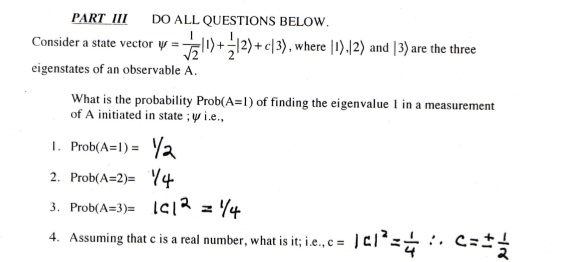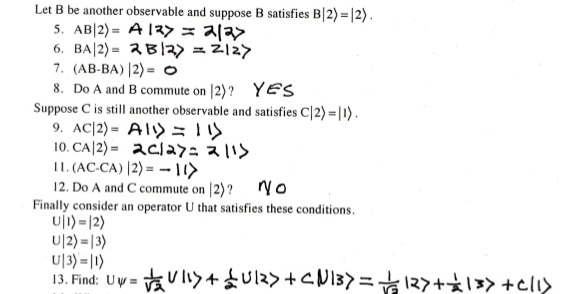
These were an exercise in Born's Rule.
The next questions depend on linearity and on understanding the Dirac notation;
e.g., knowing that if |1> is an eigenstate of A, then its eigenvalue is 1, so that A|1>=|1>.
The next questions depend on linearity and on understanding the Dirac notation;
e.g., knowing that if |1> is an eigenstate of A, then its eigenvalue is 1, so that A|1>=|1>.

The final two questions concern understanding the inner product and the concept of an eigenstate.

Question 15 relates to the "many minds" and also to quantum logic.
For suppose that alpha and beta are the two possible results of a measurement
and that |psi> is the after-measurement state.
And suppose Q is the question:
"Do you believe that the measurement had a definite result in this state?"
Where Q=1 means "yes" and Q=0 means "no".
Then in the |alpha> eigenstate, Q=1; also in the |beta> eigenstate.
But then in the superposition |psi>, where there is no definite result,
we find that here too Q=1.
So the linearity of QM seems to entail that we are bound to be deceived,
having to believe in definite results when there are none.
That is the foundation for "many minds".
Quantum logic would make the superposed state |psi> represent the disjunction:
"the result is either alpha or beta".
Here we let Q=1 mean "true"and Q=0 mean "false".
Then although in superposed state |psi> the result in fact is neither alpha nor beta,
it turns out to be "true" (Q=1) that the result is either alpha or beta!
(Funny "logic" indeed.)